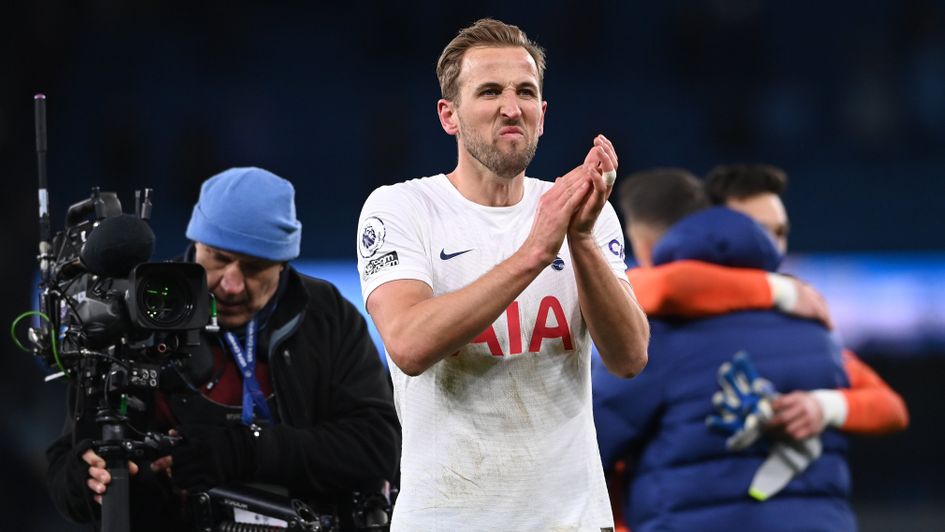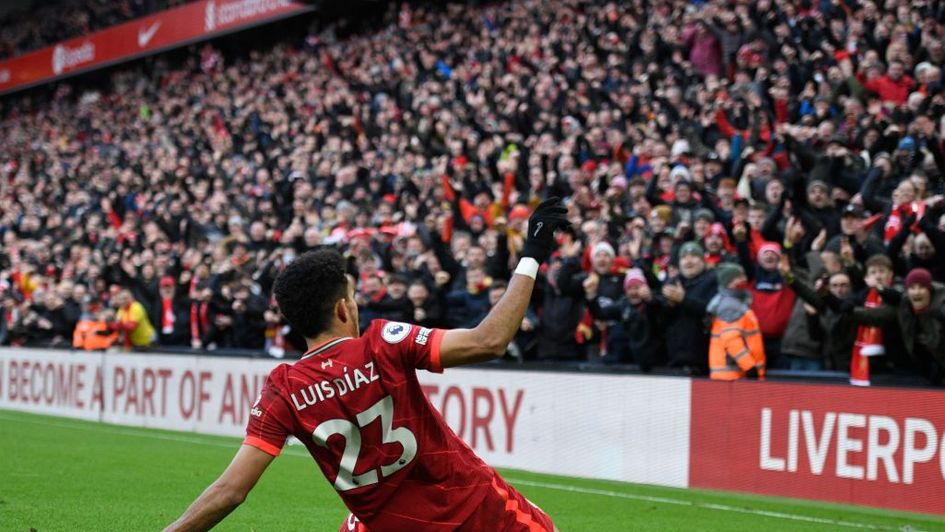 Fast Results
Fast Results Scores
Scores
Premier League tactical analysis: Harry Kane, Thiago, Frank Lampard performances under spotlight
Antonio Conte deserves credit for drawing brilliance from Spurs striker Harry Kane, says Alex Keble.
Kane magic shows Conte made the right calls
After an anxious week at Tottenham, in which Antonio Conte’s explosive interview cast some doubt over his long-term viability in the role, here was a memorable victory to end the mini-crisis and – quite possibly – reopen the title race. But what will please Conte even more than Harry Kane’s astonishing individual performance was the fact his tactical plan worked perfectly.
Spurs clearly enjoyed the simplicity of a more defensive approach. Conte instructed his players to sit very deep in a flat 5-4-1 formation that shuffled across but almost never went outside the width of the penalty area. The narrowness and compression between the lines stumped Man City, as it fairly often does, because Pep Guardiola’s team can be lulled into tame possession – lacking the cut and thrust, the creativity, the penalty box movement, or the finishing that Kane provides.
Manchester City 2-3 Tottenham
— Sporting Life Football & Infogol (@InfogolApp) February 19, 2022
‣ xG: 2.61 - 1.93
Riyad Mahrez's 92nd minute penalty - awarded after a VAR monitor check - looked to have secured a point for City but Harry Kane netted a remarkable late winner. pic.twitter.com/WVgOnnPnuC
There were some difficult moments in the first half, when Joao Cancelo ran the game from the left thanks to Tottenham’s weakness there; Emerson Royal and Dejan Kulusevski struggled to cope positionally, and neither were helped by the fact right-sided central midfielder Rodrigo Bentacur kept erratically pressing on his own, abandoning the rigid structure. Funnily enough, the one time Bentancur didn’t press was when Raheem Sterling crossed from that side to create City’s equaliser.
Tottenham’s defensive plan was mostly successful, but it still required magic from Kane – magic that Conte can take some credit for. As we predicted in the preview piece, Kane was instructed to drop off the front line in order to overwhelm Rodri, who was invariably left alone as Kevin de Bruyne and Ilkay Gundogan roamed forward in attack.
As soon as Tottenham won the ball back, Kane dropped and Heung-Min Son and Kulusevski made darting runs on the shoulder of the last defender. The movement from all three players was crucial in numerous counter-attacking opportunities, including the goal. You cannot account for Kane’s genius, but credit to Conte for maximising it.
Rotation is possible, just don’t leave out Thiago
Jurgen Klopp reacted angrily this week to the suggestion that his preference for five substitutions was about getting a tactical advantage, and the sincerity of his argument was given weight on Saturday when it took only one substitution, Thiago Alcantara for Alex Oxlade-Chamberlain, to change the tactical landscape of a tricky game at Anfield.
Klopp was almost made to pay for his decision to rest several players, notably Fabinho and Andrew Robertson, as it was proved once again that the high-risk strategy of a high defensive line is extremely vulnerable to counter-attacks – and therefore to losing control – without the perfection that only comes from a consistent team selection.

Indeed, there was a five-minute period after Norwich's opener when it looked as though Liverpool may not summon the energy and the visitors may be able to batten down the hatches – only for Thiago’s appearance to add grace, control, and a forward-thrusting energy to proceedings that saw Anfield catch fire.
None of the three Liverpool goals were directly scored or created by Thiago, but there is no doubt his poise and immaculate technical ability soothed his team-mates, forced Norwich deeper, and began waves of pressure. Tellingly, Thiago managed 49 passes (with a 95% accuracy) in just 30 minutes, which, over a full 90, would be around 150 passes – a Premier League record and 50% more than any other player on the pitch on Saturday.
The Spaniard has only started 11 games in all competitions this season. Liverpool have won all 11. The lesson here is that Klopp might be able to get away with heavy rotation, but he dare not leave Thiago out.
Lampard & Gerrard see old habits die hard
Although at very different stages at their new Premier League jobs, Steven Gerrard and Frank Lampard are both currently experiencing what it’s like when the honeymoon period wears off and the players, no longer riding a wave of confidence that brings them out of themselves, start sliding back into old habits.
For Aston Villa, the sharp, penetrative football through their dual tens has evaporated, with the slower and hesitant passing lines of the Dean Smith era returning. This is arguably in part a tactical issue – Premier League opponents like Watford are learning to pack the middle, blocking the playmakers from within Villa’s 4-3-2-1 – but it is also about a lack of quality in defensive midfield and a lack of time in training to commit the set-plays to muscle memory. Villa fans will need to be patient.
As for Everton, it looks as though the 3-0 win over Leeds United was an anomaly; a game in which the chaos of Marcelo Bielsa gave Lampard’s side the opportunity to out-fight and out-attack Leeds. Southampton, like Newcastle before them, pressed hard onto Everton’s two-man midfield to cause defensive errors and – pushing them back – timidity in the ranks.
What’s mildly alarming is that Lampard thought it wise to go 4-4-2 even after Newcastle’s midfield had harassed Allan and Andre Gomes two weeks ago. Saints’ strategy was similar and, putting a central duo under pressure, so was the outcome.
Southampton 2-0 Everton
— Sporting Life Football & Infogol (@InfogolApp) February 19, 2022
‣ xG: 2.79 - 0.30
Stuart Armstrong and Shane Long on the scoresheet for the Saints. pic.twitter.com/iaImWmyFDr